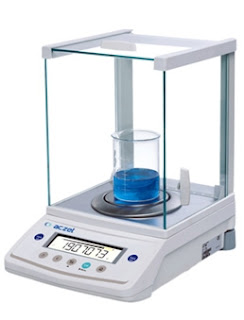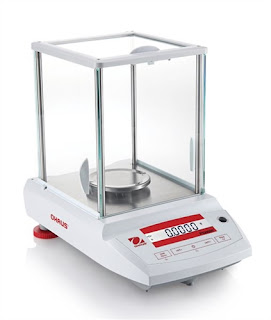Know About Digital Analytical Balances

Original Source: https://globallabsupply.blogspot.com/2020/06/you-might-not-know-about-digital.html
You might not know about Digital Analytical Balances but you have definitely seen one in a laboratory. The laboratory instruments that are precisely designed to measure mass accurately are the ones that go by the name Digital Analytical Balance. They are highly sensitive instruments with a readability range of 0.1mg - 0.01mg. Furthermore, they have a draft shield or weighing chamber. This is used to prevent tiny samples from being affected by air currents.
With these, it becomes really easy to detect increments that are really fine. Thus, even the slightest hint of a breeze can have a major impact on the results. Therefore, if you are using these balances you should make sure that you use them in a dedicated room with little or no disturbances inside where you are working. You should keep a close eye on these analytical balances and calibrate them as frequently as you can. In most of the Digital Analytical Balances, you will notice that there are both the options of automatic internal motorized calibration and calibration with external weights. You can also set calibration weights carefully with such options available.
How are analytical balances different from other available balances?
As we have already discussed, the sole purpose of the analytical balance is to measure very small samples precisely. The Precision Balances are built with a higher capacity than the analytical balances and they typically deliver results of 0.1g, 0.01g or 1mg. On the other hand, the analytical balances are much more sensitive to changes and can detect really small variations in mass.
The Precision balances are also distinguished for the wide array of body style and options they offer. However, they fail to offer readabilities that are greater than three decimal places. Therefore, if you want acute measurements in your laboratory you must ensure that you have analytical balances with you.
Though the top-loading balances have been really popular, analytical balances like the Nimbus are becoming a huge hit. These balances have a weighing chamber that encloses the weighing pan with glass doors. This helps us get rid of any external interference from vibration or air currents. However, the weighing pan that you get with these balances are a bit smaller than what comes with the precision balances, and thereby, they can only accommodate small samples.
What are the features of the Analytical Balances?
You will find numerous features and functions if you go for an analytical balance. The applications of counting and check counting are found in the case of most of them. You can use these applications to count pills, ingredients or very small pieces. Another useful function that these devices offer the users is that of dynamic weighing. With this function, it becomes really easy for lab professionals to weigh unstable samples such as liquids, small animals, or insects. Percentage weighing helps in the quicker and more efficient formulation. This is quite handy for chemistry and pharmaceutical applications. The accumulation helps the users to derive large results despite the balance's small capacity. Therefore, you can go for the accumulation of the results of doses or packaging to receive a total instead of having all the materials on the balance at one time.
If you are interested in laboratory work you need GLP/ISO compliant reports. If you automatically fill the balance in relevant fields, you can save your precious time for your work instead of spending it on formatting. This is one of the features used to bring in strict quality controls in work.
A bright display with multilingual software support makes the balance popular across countries where a variety of multilingual staff and students can use them effortlessly. It takes longer to stabilize in case of analytical balances than if you use precision balances.
A level indicator and adjustable feet are also important in these balances. This is because you need to ensure that the balance is stable in order to produce reliable results.
What do you need to use analytical balance?
Printers and USB devices are pretty useful to use with the analytical balances to store the test results effortlessly. Software like Adam DU can also be paired with your balance if you want further data analysis of your results. It is mandatory to install a security lock in order to prevent theft and make sure that the balance always stays stationary in the room.
Apart from these, density kits are popular accessories in labs and classrooms. These kits enable the balance to make density and specific gravity measurements.
USB and RS-232 interfaces are some of the other useful devices, which you can use to send data to computers and printers. This will help save time and also brings in provisions of later-in-depth analysis. Coupled with GLP/ISO compliant printouts, you can hope to save even more time and effort.
- Industry
- Art
- Causes
- Crafts
- Dance
- Drinks
- Film
- Fitness
- Food
- Παιχνίδια
- Gardening
- Health
- Κεντρική Σελίδα
- Literature
- Music
- Networking
- άλλο
- Party
- Religion
- Shopping
- Sports
- Theater
- Wellness
- News




